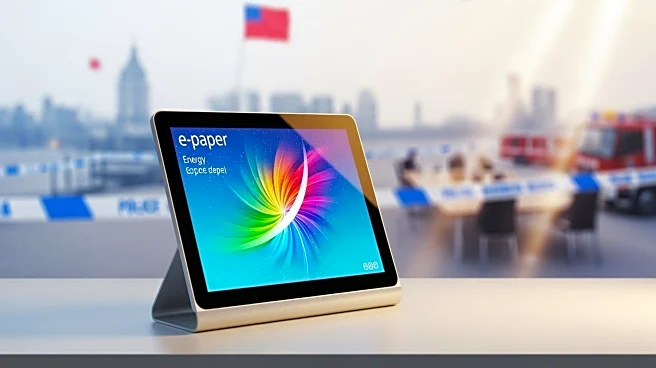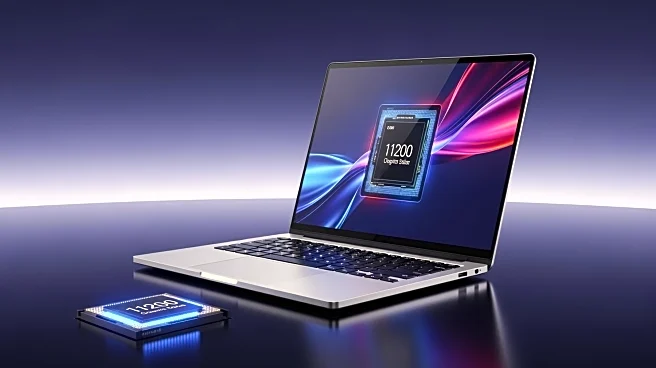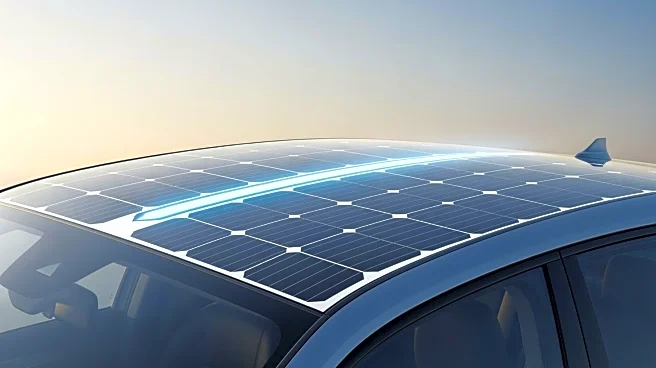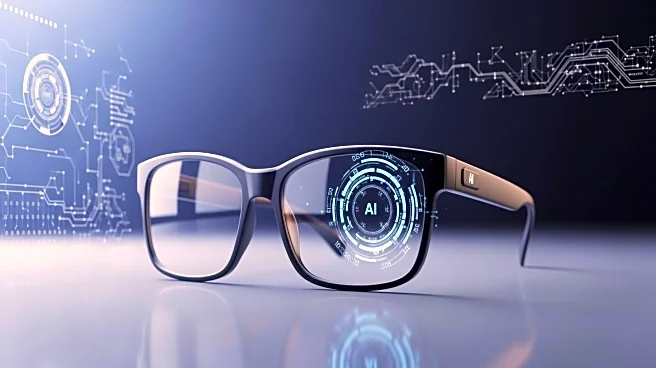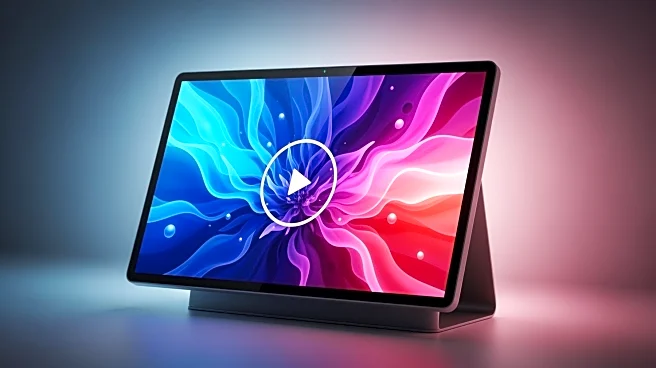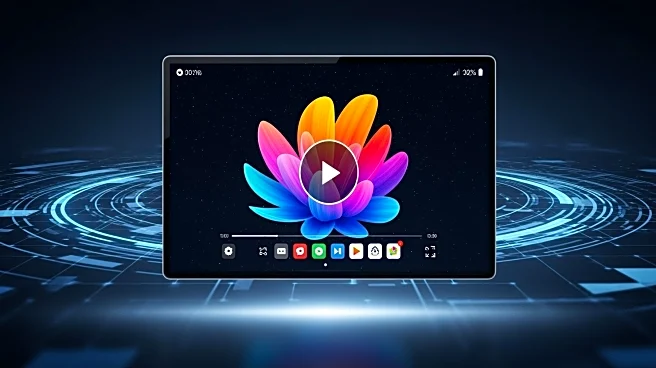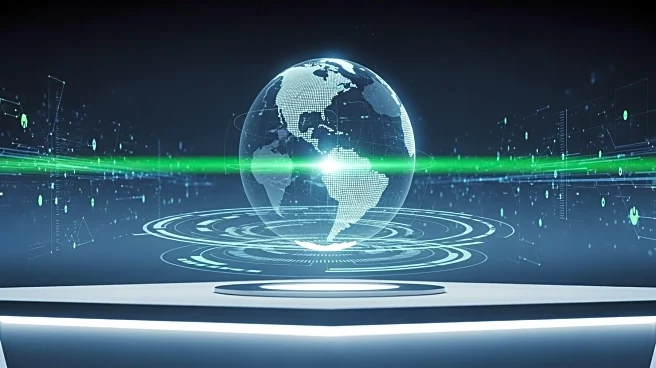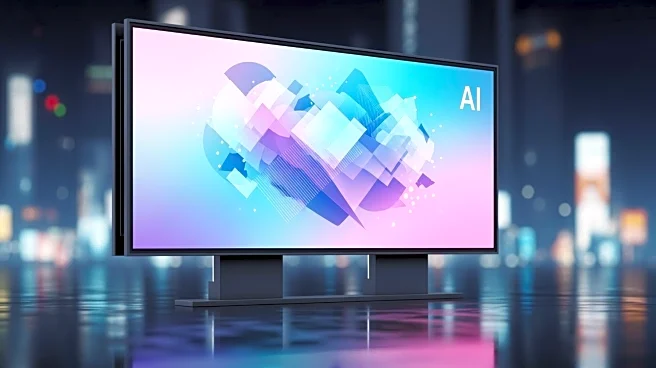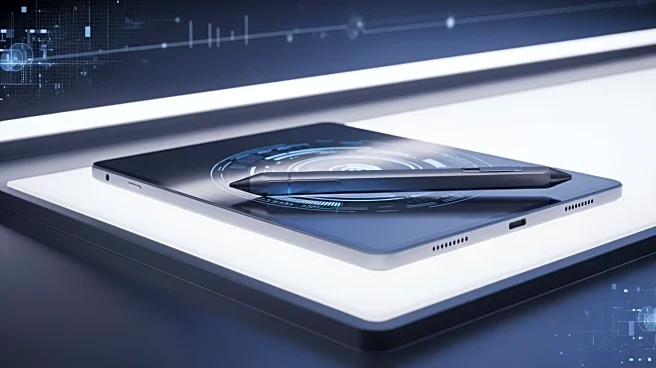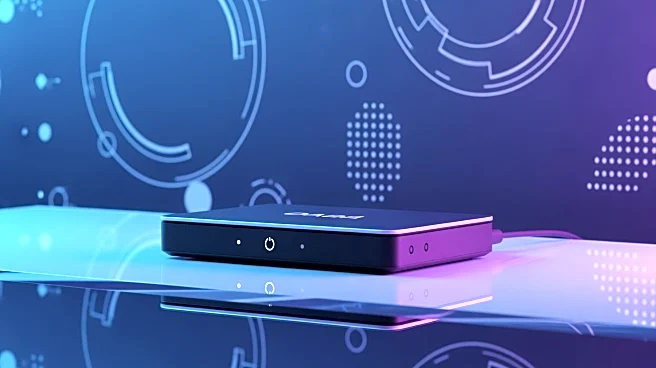What's Happening?
Researchers at the University of Uppsala in Sweden have developed a new type of colour e-paper that can display high-resolution images and video while using minimal energy. This innovation utilizes tungsten oxide nanodiscs to create pixels, each measuring
around 560 nanometres, resulting in a resolution of 25,000 pixels per inch. Unlike traditional LED screens, which emit light to produce colour, e-paper screens use tiny molecules to create images. The new e-paper can refresh every 40 milliseconds, fast enough to display video, and maintains its colour without continuous power, using only brief electrical pulses to set the colour. The display uses approximately 1.7 milliwatts per square centimetre for video and 0.5 milliwatts per square centimetre for still images, making it highly energy-efficient.
Why It's Important?
The development of energy-efficient colour e-paper has significant implications for the future of display technology. By reducing energy consumption, this innovation could lead to more sustainable electronic devices, benefiting both consumers and the environment. The ability to display video on e-paper screens opens up new possibilities for smartphones and other portable devices, potentially extending battery life and reducing the need for frequent charging. This advancement could also influence the design of wearable technology and e-readers, offering users vibrant displays without the energy demands of traditional screens. As energy efficiency becomes increasingly important in technology, this breakthrough positions e-paper as a viable alternative to LED displays.
What's Next?
The next steps for this technology could involve scaling up the production of e-paper displays and integrating them into commercial devices. Researchers may focus on expanding the size of the e-paper screens to match the dimensions of current smartphone displays, while maintaining the high resolution and energy efficiency. Collaboration with tech companies could accelerate the adoption of this technology in consumer electronics. Additionally, further research might explore enhancing the durability and flexibility of e-paper, making it suitable for a wider range of applications, including foldable devices and large-scale displays.
Beyond the Headlines
Beyond its immediate technological impact, the development of energy-efficient e-paper could contribute to broader environmental goals by reducing electronic waste and energy consumption. As the demand for sustainable technology grows, innovations like this could play a crucial role in shaping eco-friendly practices within the tech industry. Moreover, the ability to maintain colour without continuous power could lead to new design possibilities in digital art and advertising, where static displays can remain vibrant without draining energy.
